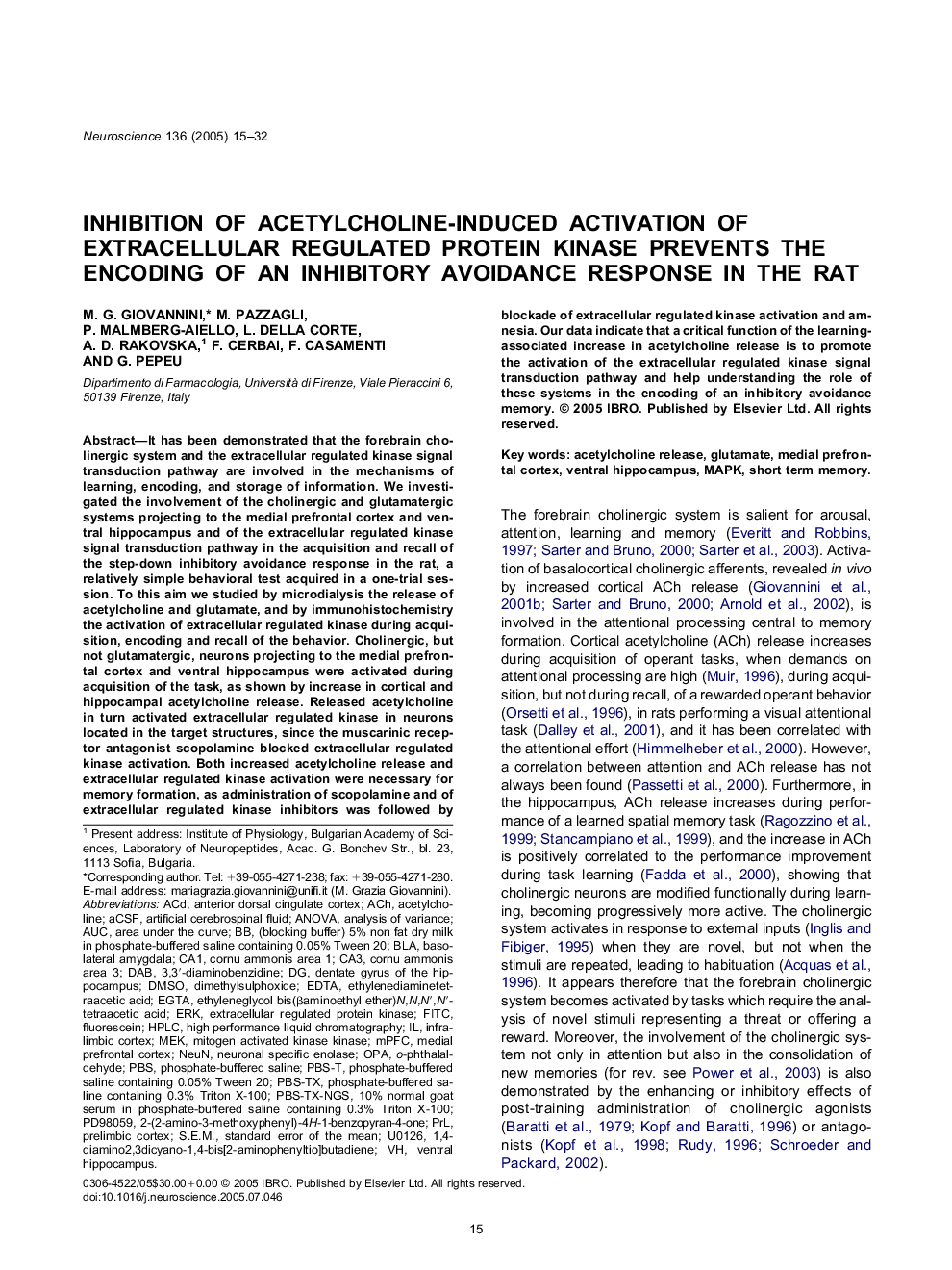| Article ID | Journal | Published Year | Pages | File Type |
|---|---|---|---|---|
| 9426212 | Neuroscience | 2005 | 18 Pages |
Abstract
It has been demonstrated that the forebrain cholinergic system and the extracellular regulated kinase signal transduction pathway are involved in the mechanisms of learning, encoding, and storage of information. We investigated the involvement of the cholinergic and glutamatergic systems projecting to the medial prefrontal cortex and ventral hippocampus and of the extracellular regulated kinase signal transduction pathway in the acquisition and recall of the step-down inhibitory avoidance response in the rat, a relatively simple behavioral test acquired in a one-trial session. To this aim we studied by microdialysis the release of acetylcholine and glutamate, and by immunohistochemistry the activation of extracellular regulated kinase during acquisition, encoding and recall of the behavior. Cholinergic, but not glutamatergic, neurons projecting to the medial prefrontal cortex and ventral hippocampus were activated during acquisition of the task, as shown by increase in cortical and hippocampal acetylcholine release. Released acetylcholine in turn activated extracellular regulated kinase in neurons located in the target structures, since the muscarinic receptor antagonist scopolamine blocked extracellular regulated kinase activation. Both increased acetylcholine release and extracellular regulated kinase activation were necessary for memory formation, as administration of scopolamine and of extracellular regulated kinase inhibitors was followed by blockade of extracellular regulated kinase activation and amnesia. Our data indicate that a critical function of the learning-associated increase in acetylcholine release is to promote the activation of the extracellular regulated kinase signal transduction pathway and help understanding the role of these systems in the encoding of an inhibitory avoidance memory.
Keywords
NeuNNeuronal specific enolase2-(2-amino-3-methoxyphenyl)-4H-1-benzopyran-4-onephosphate-buffered saline containing 0.05% Tween 20PD98059U0126ACDPBS-TPRLCA3MPFCaCSFS.E.M.ERKOPAEGTABLADABPBSFITCCA13,3′-diaminobenzidinebasolateral amygdalaAUCDMSOMAPKo-PhthalaldehydePBS-Txcornu ammonis area 1AChEDTAEthylenediaminetetraacetic acidAcetylcholineAcetylcholine releaseCornu Ammonis area 3analysis of varianceANOVAShort term memorystandard error of the meandentate gyrus of the hippocampusdimethylsulphoxidephosphate-buffered saline containing 0.3% Triton X-100Fluoresceininfralimbic cortexmedial prefrontal cortexprelimbic cortexartificial cerebrospinal fluidMEKPhosphate-buffered salinearea under the curveventral hippocampusExtracellular regulated protein kinasehigh performance liquid chromatographyHPLCglutamate
Related Topics
Life Sciences
Neuroscience
Neuroscience (General)
Authors
M.G. Giovannini, M. Pazzagli, P. Malmberg-Aiello, L. Della Corte, A.D. Rakovska, F. Cerbai, F. Casamenti, G. Pepeu,
